Fromage Blanc Recipe – Easy to Make Soft Cheese
This fromage blanc cheese recipe is easy to make, and you can use it as a cream cheese substitute during the Great Cream Cheese Shortage.
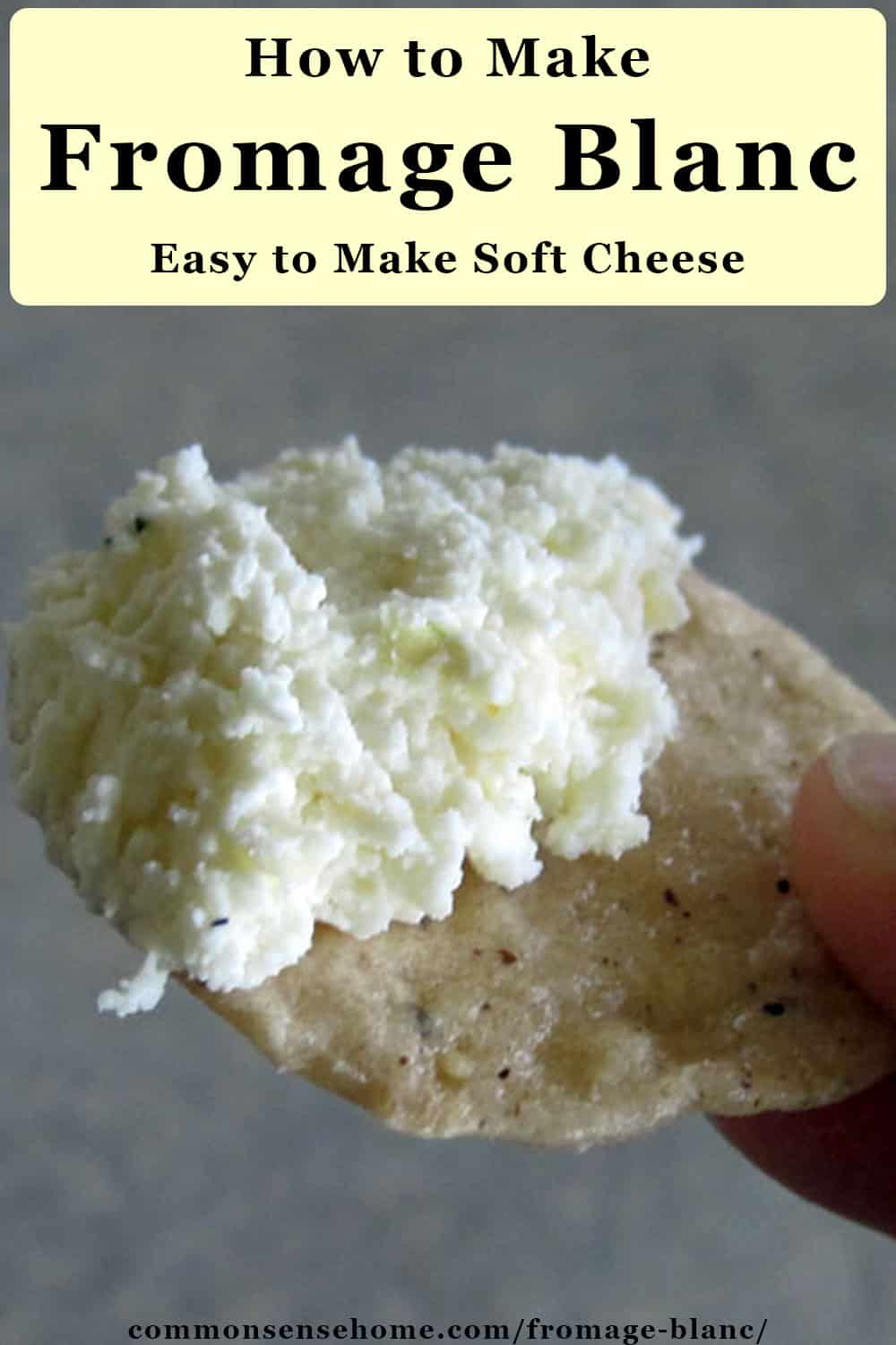
What is Fromage Blanc?
Fromage blanc is French for “white cheese”. It's a soft fresh cheese (not aged) with a texture similar to yogurt or sour cream when lightly drained. If you drain it a little more, it's closer to cream cheese, fresh chevre, or queso fresco.
It's easy to make, with just two ingredients! You can spread it on bread or bagels, use it in recipes, or add flavorings to use it as a dip.
Fromage Blanc Recipe – Homemade Soft Cheese
I like to start this cheese just before bedtime, let it culture overnight, and drain it in the morning.
Ingredients
1 gallon milk – raw milk or pasteurized, whole or skim (skim milk will yield a fat free, drier cheese)
1 packet direct set fromage blanc culture
Directions
Adapted from the book Home Cheese Making
In a large pot, heat milk to 86℉. Add the starter and mix well.
Cover and let set at 72 ℉ for 12 hours. Since it gets cool in my kitchen overnight in the winter, I've been placing mine in a cooler with a warm hot pack. I tuck a big towel around it to keep it cozy and absorb any moisture. (There is generally a bit of condensation.)
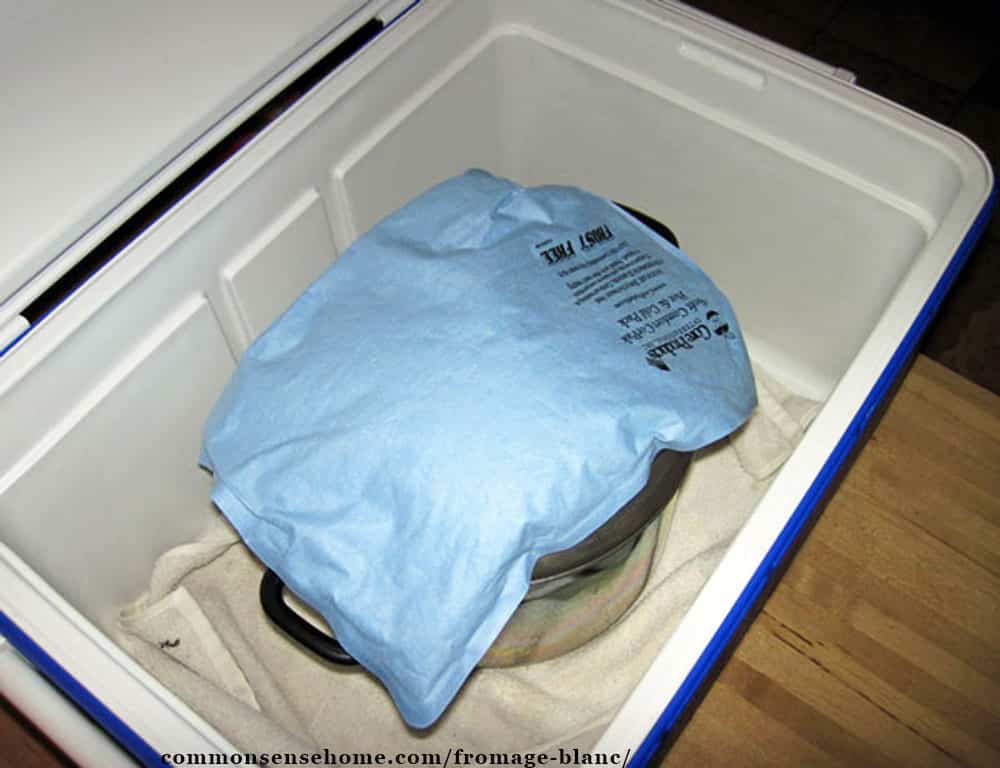
After 12 hours, the curd will be firm and the whey will be separated and slightly milky.
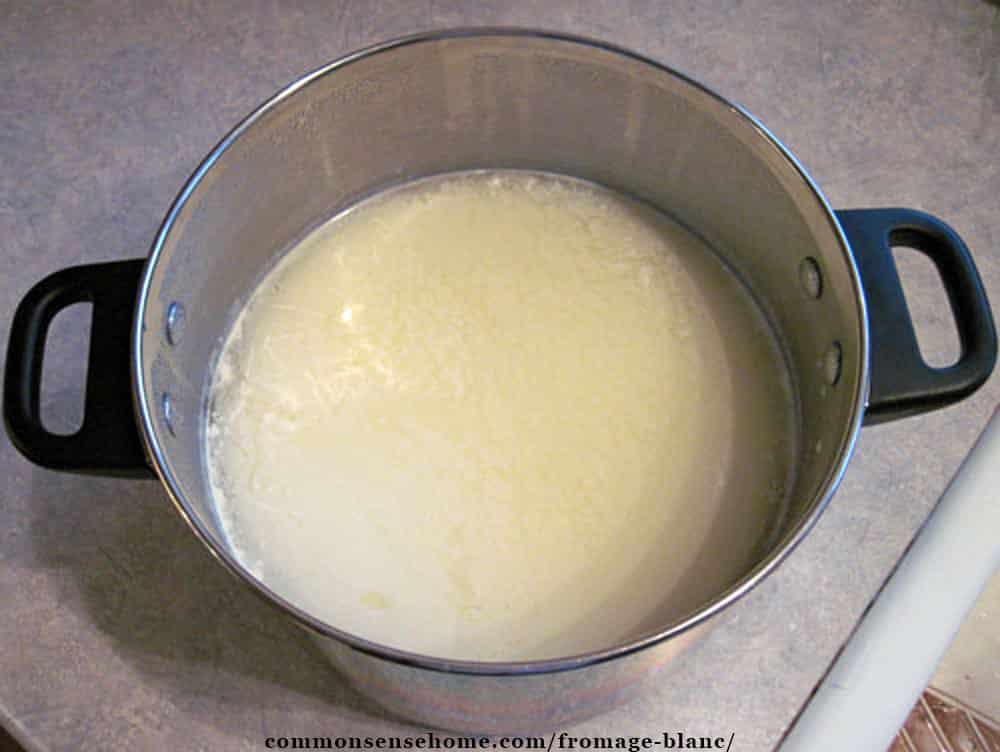
I place my big over-the-sink colander in a large bowl and line it with a large flour sack towel. You can also use butter muslin or a double layer of cheesecloth.
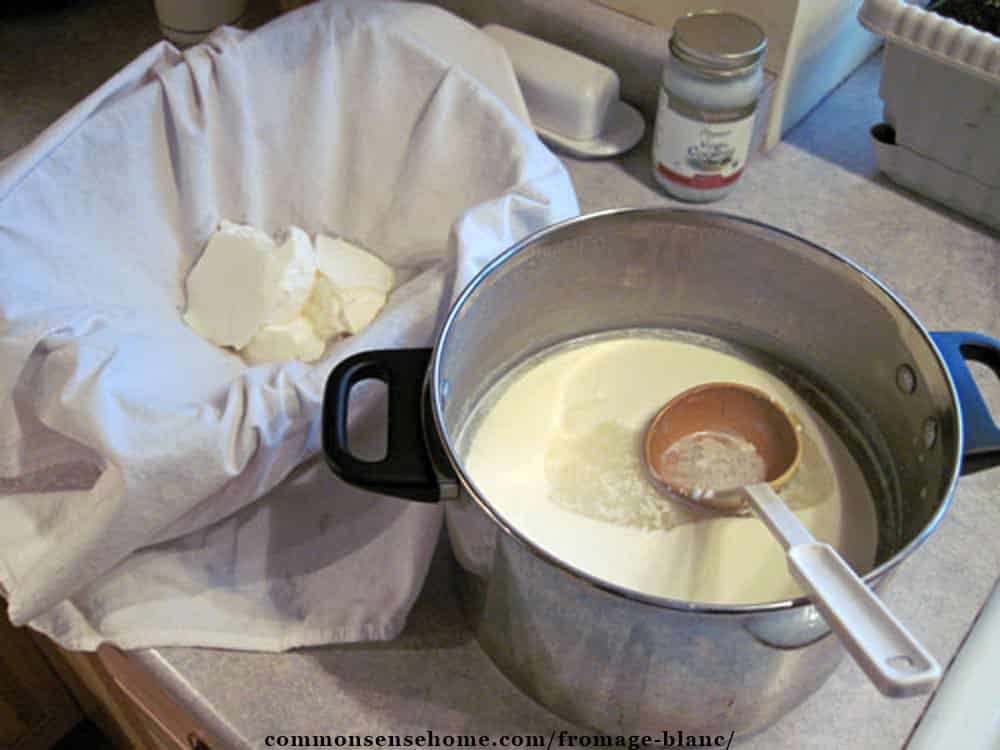
The cheese will just about fill the colander at this point. It shrinks up as it drains. Right now it looks more like thick yogurt.
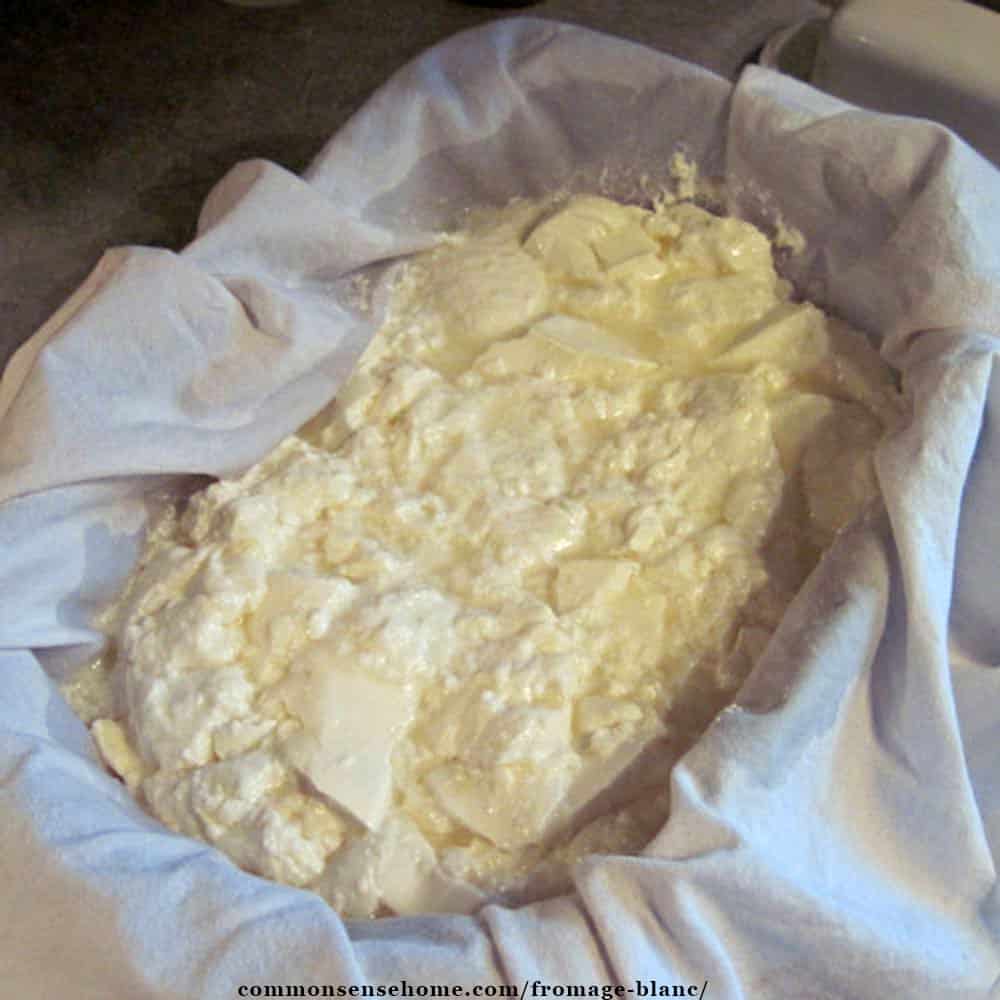
Tie the ends of the cloth and hang to drain at room temp for 6-12 hours. Shorter drain time = softer cheese, longer drain time = firmer cheese. I generally hang for 6-8 hours.
Note: If cabinets are not extra sturdy, use a wooden spoon braced over a large container, or the back of a chair to hold your cheese for draining.

When the cheese is done, it'll be dry and fairly firm.
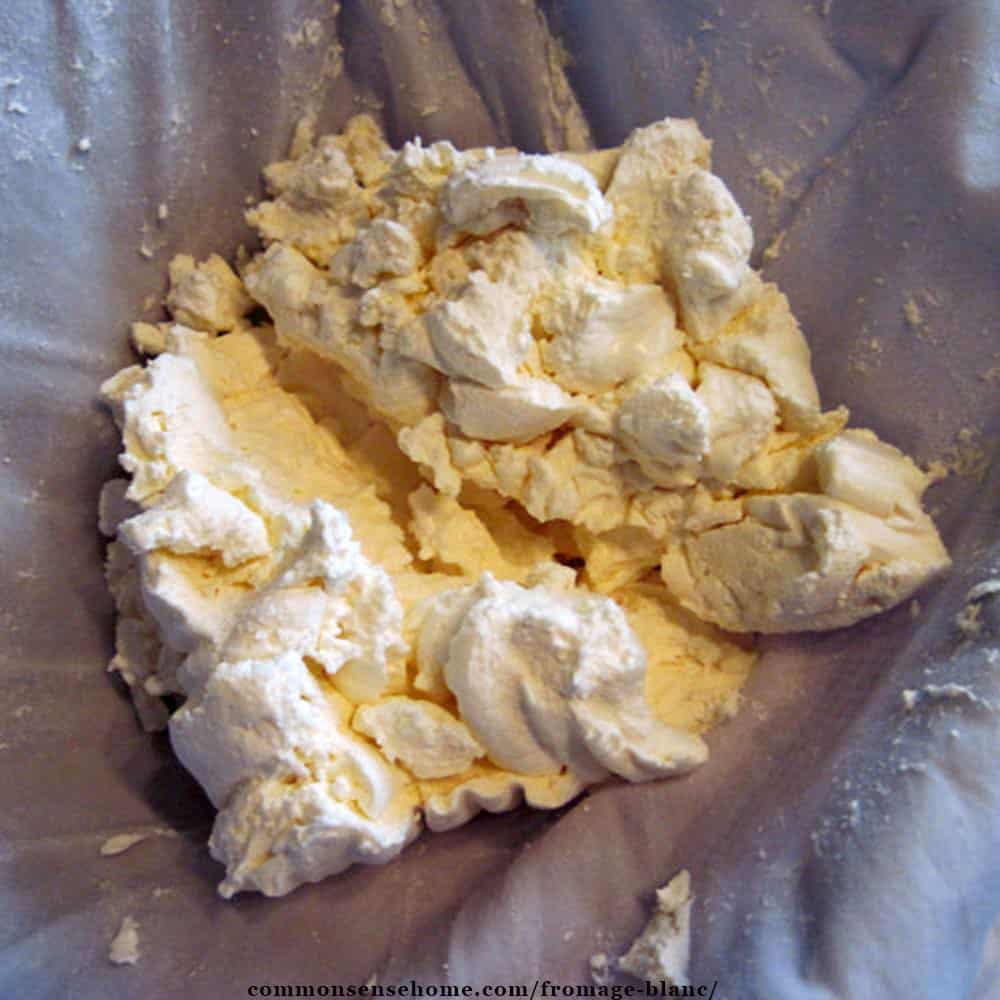
At this point you an use it “as is”, or add flavorings. It'll keep for up to 7-10 days refrigerated in a covered container.
One gallon of milk yields about 2 pounds of cheese.
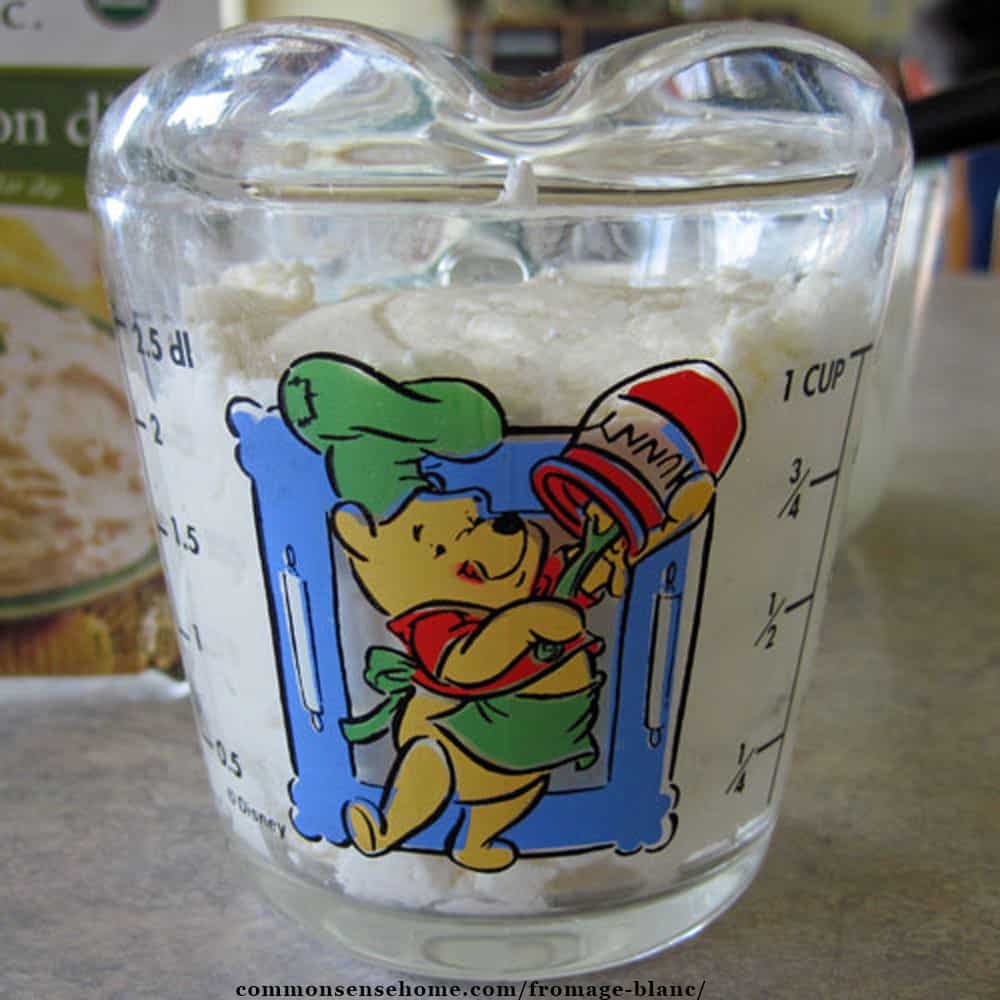
Flavoring Soft Cheese
Fromage blanc has a mild flavor, so you can serve it savory or sweet. Drizzle it with honey and serve it with berries, or use herbs or chopped veggies for a dip or spread.
A couple of favorite options in our house are to mix it up like French onion dip with a dip mix. This is what's on the cracker at the top of the post.
To make a seafood flavored spread, I took 2 cups of cheese, a 4 ounce can of baby shrimp, 2 tablespoons ketchup and 2 tablespoons horseradish sauce. It makes a pretty light pink spread.
For a meat free main dish, I mix this cheese (flavored or unflavored) with some eggs, bread crumbs or flour, salt, pepper and seasonings to taste, then form into patties and fry in butter.
I hope you'll try this quick and easy cheese, and that your family will enjoy it as much as mine does.
What to do with Leftover Whey
Making cheese produces quite a bit of whey. You can drink the whey, freeze it in cubes to use in smoothies for extra protein, or use it to make live culture foods like beet kvass.
You can also feed whey to critters, like chickens, or water outside plants. The whey smells musty as it breaks down, so I don't recommend using it inside. The smell may also attract wandering animals looking for a snack, so it's best to dilute it well before using it to water plants.
Printable Recipe
Have you wanted to try cheesemaking but been too intimidated? Do you enjoy spreadable cheese but don't like the long list of questionable ingredients on most commercial cheese spreads? Fromage blanc is perfect for you to make.
PrintFromage Blanc Soft Cheese
This easy to make soft cheese is lovely spread on bread or bagels, or used like yogurt or sour cream in desserts.
- Prep Time: 10 minutes
- Culture Time + Drain Time: 18 hours
- Total Time: 18 hours 10 minutes
- Yield: 2 pounds 1x
- Category: Cheese
Ingredients
- 1 gallon milk – raw or pasteurized, whole or skim (skim will yield a drier cheese)
- 1 packet direct set fromage blanc starter
Instructions
- In a large pot, heat milk to 86 ℉. Add the starter and mix well.
- Cover and let set at 72℉ for 12 hours. If the room temperature is below 72℉, use hot packs or other sources of ambient heat. After 12 hours, the curd will be firm and the whey will be separated and slightly milky.
Place a large colander in a bowl of sufficient size and line the colander with a large flour sack towel. You can also use butter muslin or a double layer of cheesecloth.
- Tie the ends of the cloth and hang to drain at room temp for 6-12 hours. Shorter drain time = softer cheese, longer drain time = firmer cheese. I generally hang for 6-8 hours.
- Flavor the cheese or use “as is”. Store in the refrigerator for up to 10 days.
Notes
Adding a little salt will help to preserve the cheese.
If you do not have fromage blanc culture, you may substitute:
- Culture: 1/8 teaspoon mesophilic aromatic or 1 packet mesophilic direct-set culture
- Rennet: 4 drops liquid rennet or 2 drops double-strength liquid vegetable rennet, dissolved in ¼ cup cool water
More Easy Cheesy Recipes
We live in Wisconsin, so we love our cheese! These are some of our favorite recipes for making cheese and cooking with cheese.
- 30 Minute Mozzarella
- Homemade Cottage Cheese
- Cheesy Garlic Zucchini Bread
- Easy Cheese Quiche
- Cheese Soup in Homemade Bread Bowls
Originally posted in 2012, last updated in 2022.


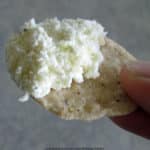
I’d like to try making this, but we wouldn’t use up 2 pounds of it in 10 days. Do you think it would work to cut it in half, or would it freeze well?
I think it would be easier to freeze it than to split it in half, since you’d need to divide the culture in half, but either should work. If you measure out the culture in the packet, you can divide what’s there in half or in quarters to make smaller batches. I used up the last packet I had on hand, otherwise I could measure to get an estimate.
My husband wants to try this!
Our kitchen also cools at night.
I am wondering if the towel gets wrapped around the pot of culture or the chest freezer?
I wrap the towel around the pot inside the cooler with the hot pack on top. You could also put a couple of mason jars of hot water inside, or a hot water bottle.
Can I use the whey to make more batches of fromage blanc using David Asher’s methods or is there not enough culture left to make it work?
I have not tried it, but I’m pretty sure there are are not enough solids left in fromage blanc whey to make a second batch of fromage blanc.
This looks like it might be my first cheese project. I’m not all that sure what homemade soft cheeses taste like; would you compare the taste of this one to cream cheese or is it just too different?
The texture is grainier, not as rich, because you use whole milk, not just cream. It’s more like chevre, if by chance you’ve had that before.
I have been making ricotta cheese since 2008 yet wanting mozzarella. I came across you today, and so very delighted. Unexpectedly more excited to try the “blanc” since I love my mid day meal to be a few crackers, cheese and some veggies for roughage. Thank you for sharing.
lol – I do the same thing – everything gets dipped. 🙂
You can also use the whey to cook brown rice or millet. It is surprisingly delicious. I have used totally whey or half whey, half water. Yum.
Drinking whey is pretty laxative.
Drying it slowly in a pan on the wood stove gives you something very hard, quite salty and tasty. I have heard it called gjetost, a Scandinavian whey cheese.
Hi! I got the culture and milk and went to start the cheese last night. I realized my food dehydrator’s lowest setting is 95 degrees. Can I culture the cheese slightly warmer, but a little shorter? I know some cultures you can play with the temp while others turn into an icky mass if you do that.
I think it would be more sour, and am not sure how much time you need to cut off, but you could try it. I normally just pack it in a cooler to hold temp, but depending on your home you may just be able to culture it at room temp, too.
Can this be put into a dehydrator and made into like a parmesian consistency for sprinking on salads and pasta etc? Thank you for posting this….I can’t wait to give this a try…cheese at the store costs a fortune~!
I haven’t tried it, but it might work. You could test a small amount to see if you like the results.
I’m a little confused. The directions say to heat the cheese to 86 degrees. Does this mean the milk?
Lisa – yes, the milk – “cheese in progress”? Thanks for pointing that out. Sometimes I get ahead of myself. 🙂
We just made this – started last night around 7:30pm and in the morning poured the loose mess into some cheese cloth. We hung it and around 3pm and scooped out a cup and made onion dip – it was fantastic! Easily as good or better than top-of-the-tater, which is our favorite dip. I’m pretty confident we won’t be buying any store dip from here out.
Woot! Woot! Glad it worked out well for you. 🙂
I would love to try this. Probably in a couple of months. Baby steps to DIY!
This looks amazing and so easy to make!
Any idea what the nutrition facts would be like?
I don’t worry too much about calories, but I did look it up here (http://www.cowgirlcreamery.com/images/Fromage_Blanc.jpg) and they say 80 calories in one ounce, 5 grams of fat, 3 grams of protein, 5 grams of carbohydrates, 10%RDA calcium, 2%RDA vitamin C, 4% RDA vitamin A.
This looks great to eat and fun to make. I cannot wait to try it. How forgiving is the recipe when it comes to keeping the mixture at a constant 72 degrees? Thanks for the peek into your life. You are a blessing!
Given that I have yet to measure the temperature when I’ve done it and it has turned out well every time, I think it’s pretty forgiving. I’m learning that many cheeses have a little “wiggle room” in the temperatures, but recipes specify temperatures to give you a point to aim for when you’re starting out.
Love this post. I had no idea it’s so easy.
Kathryn – Isn’t it great? Other than the culturing time and the draining time, it literally takes only a few minutes. You can have wholesome “gourmet” cheese spread in a flash. I love quick and easy recipes like this (and the kids love it, too).